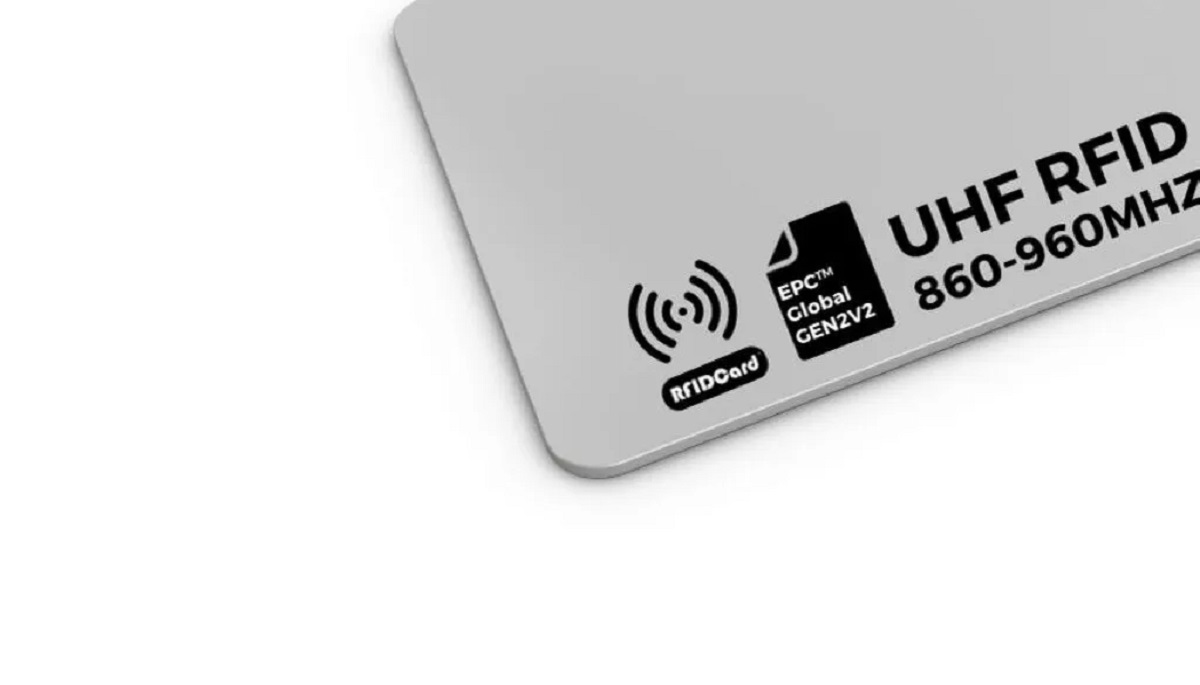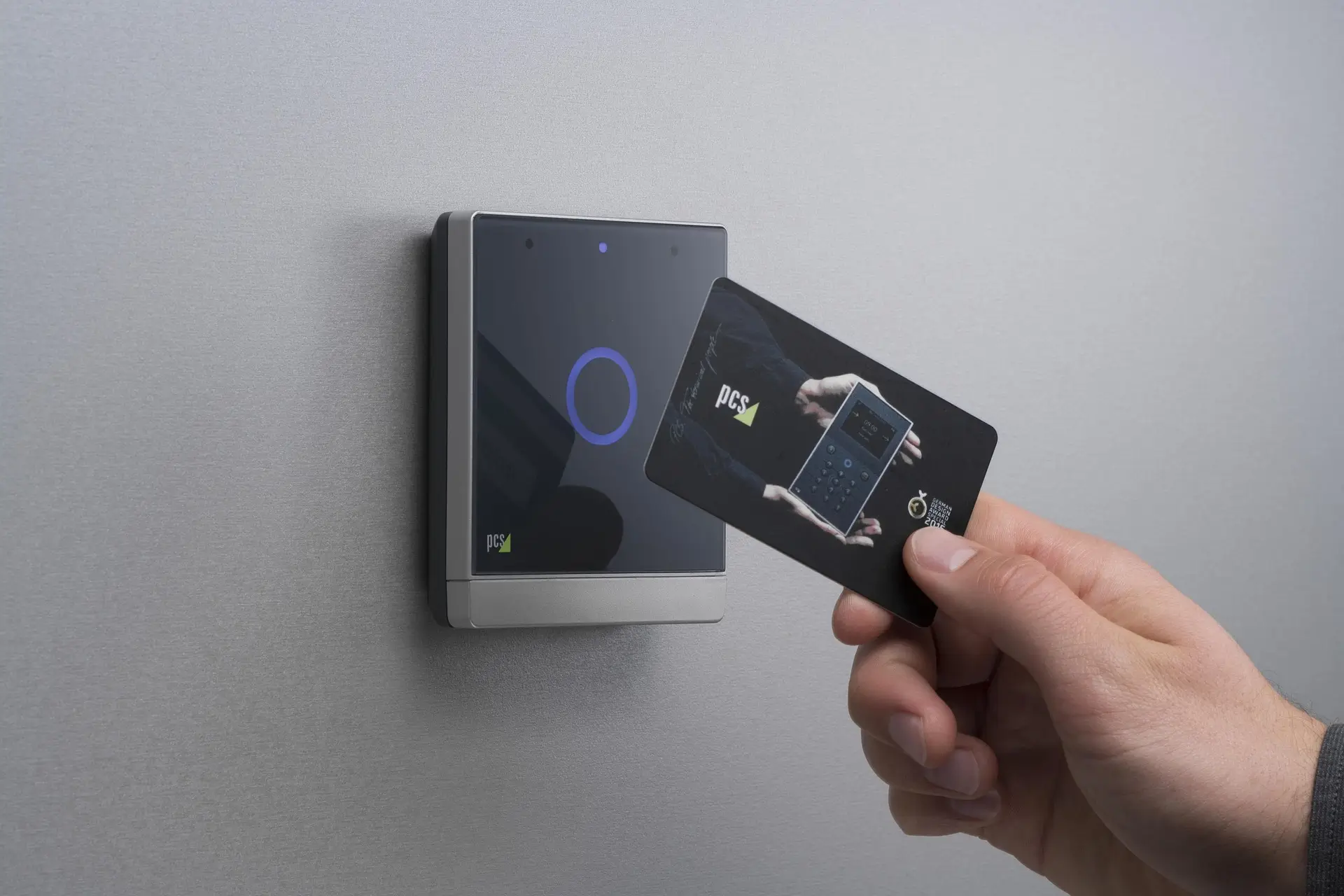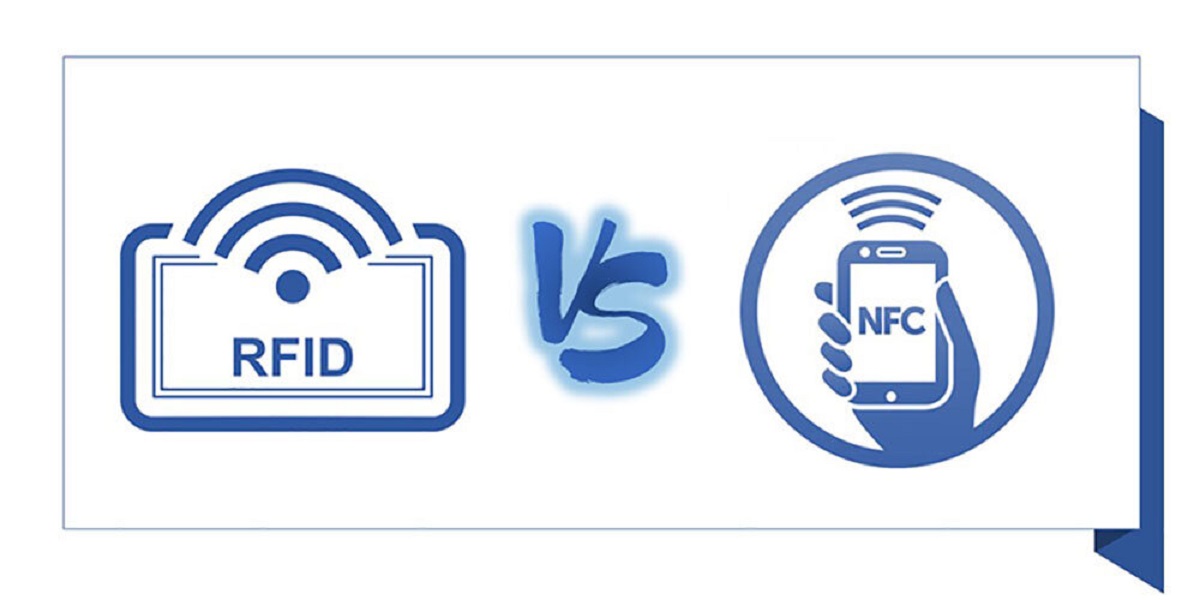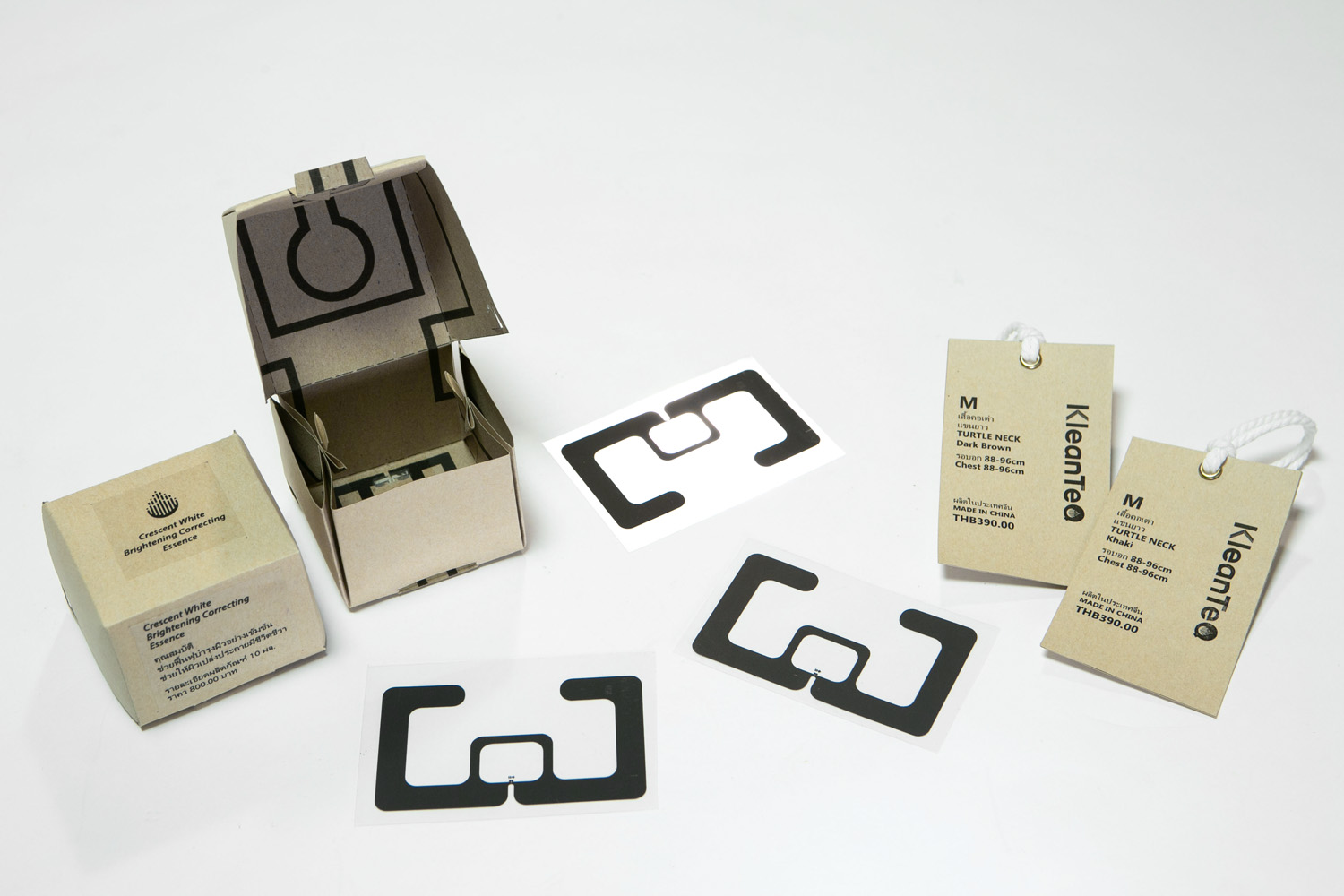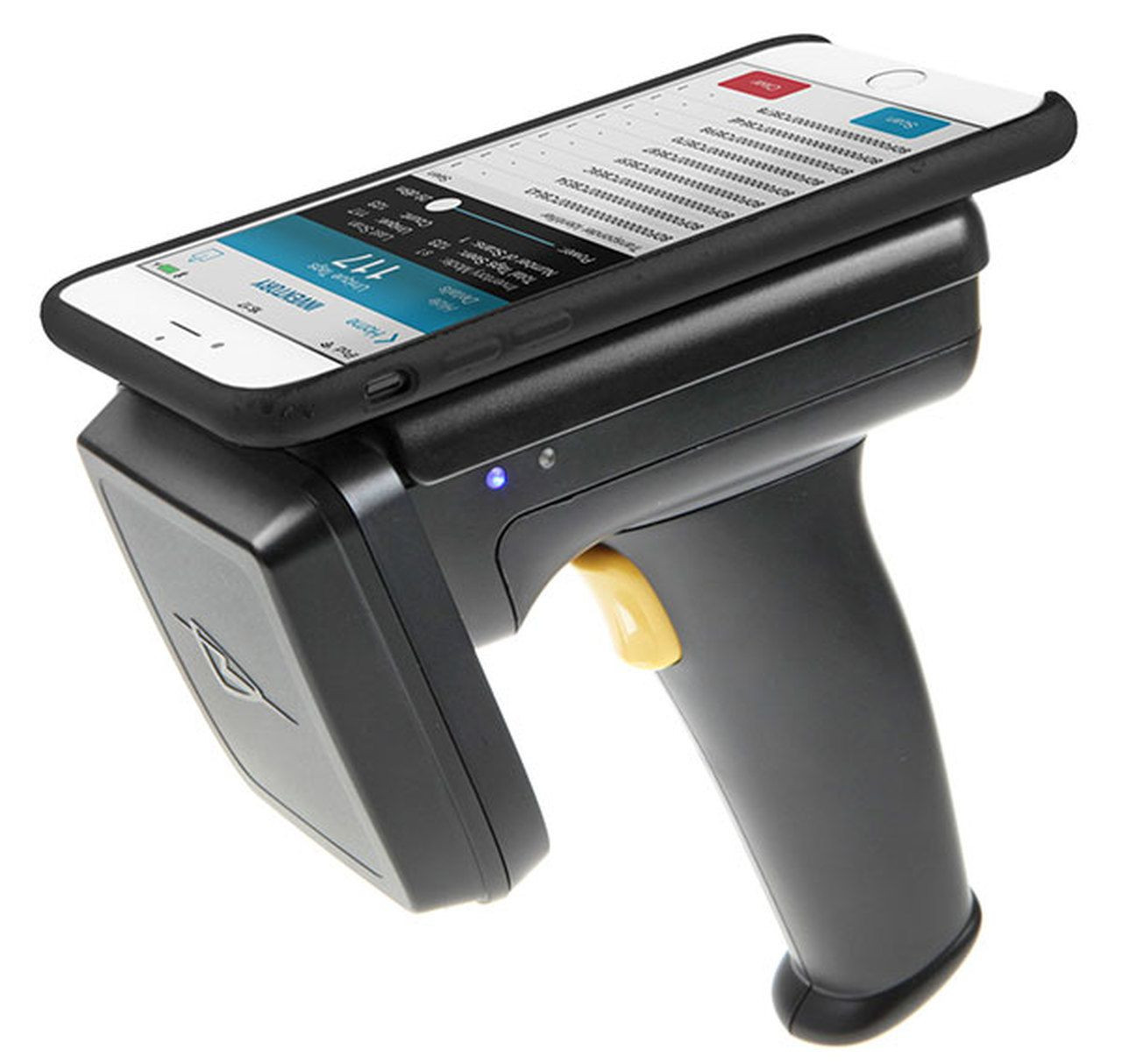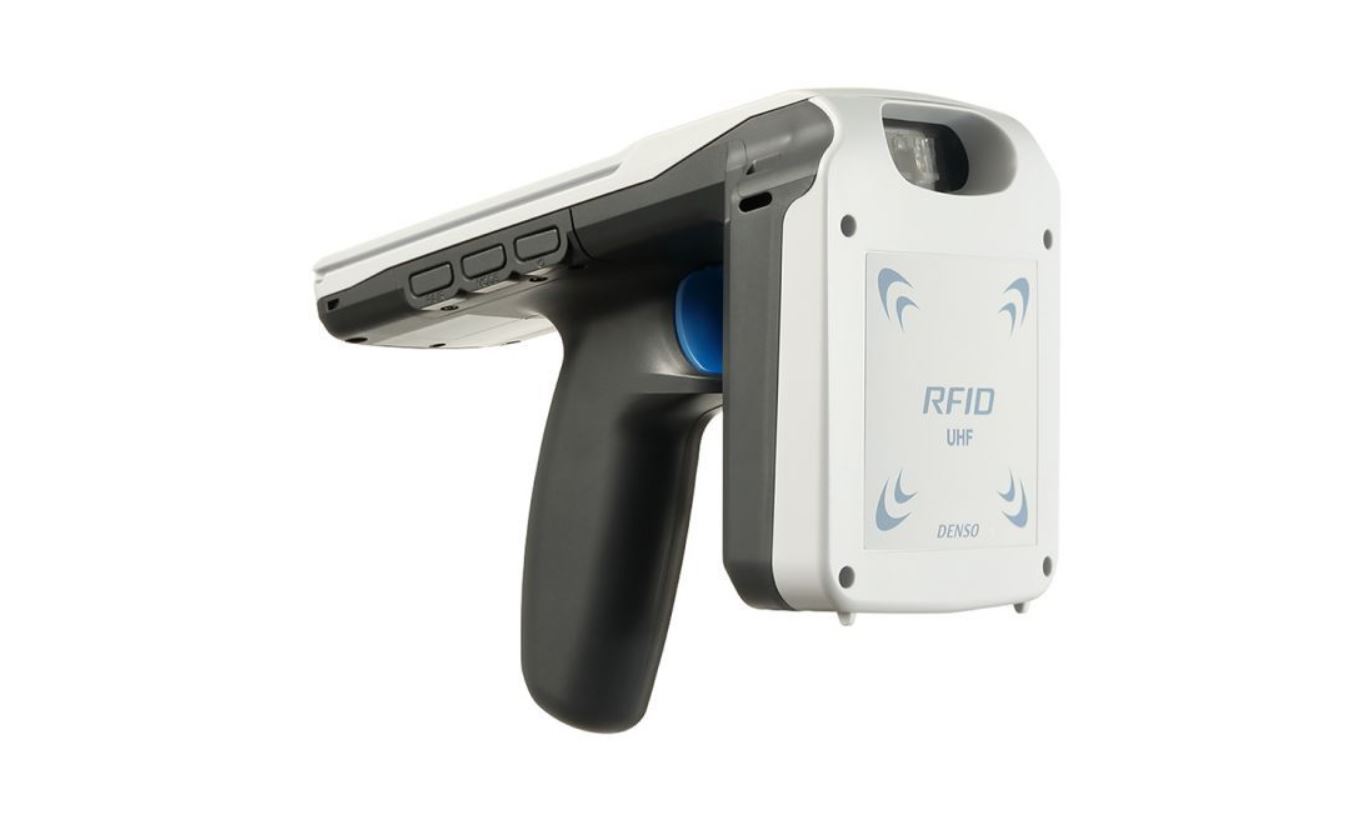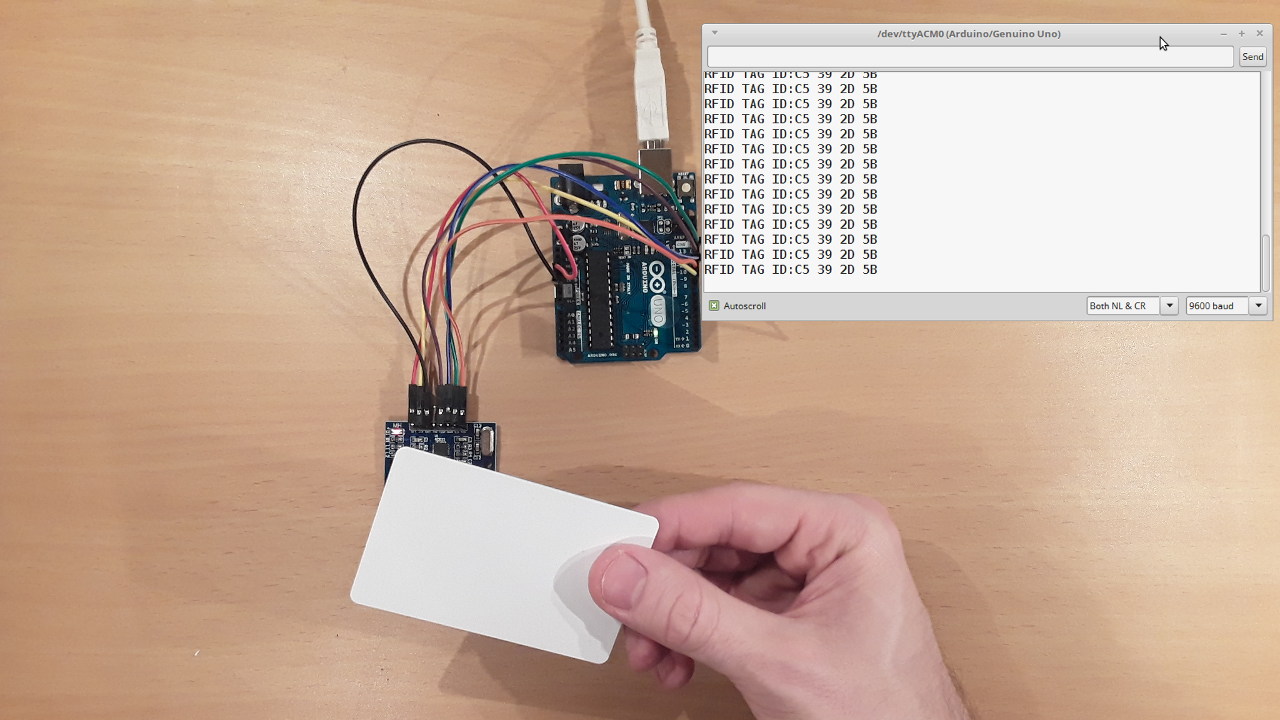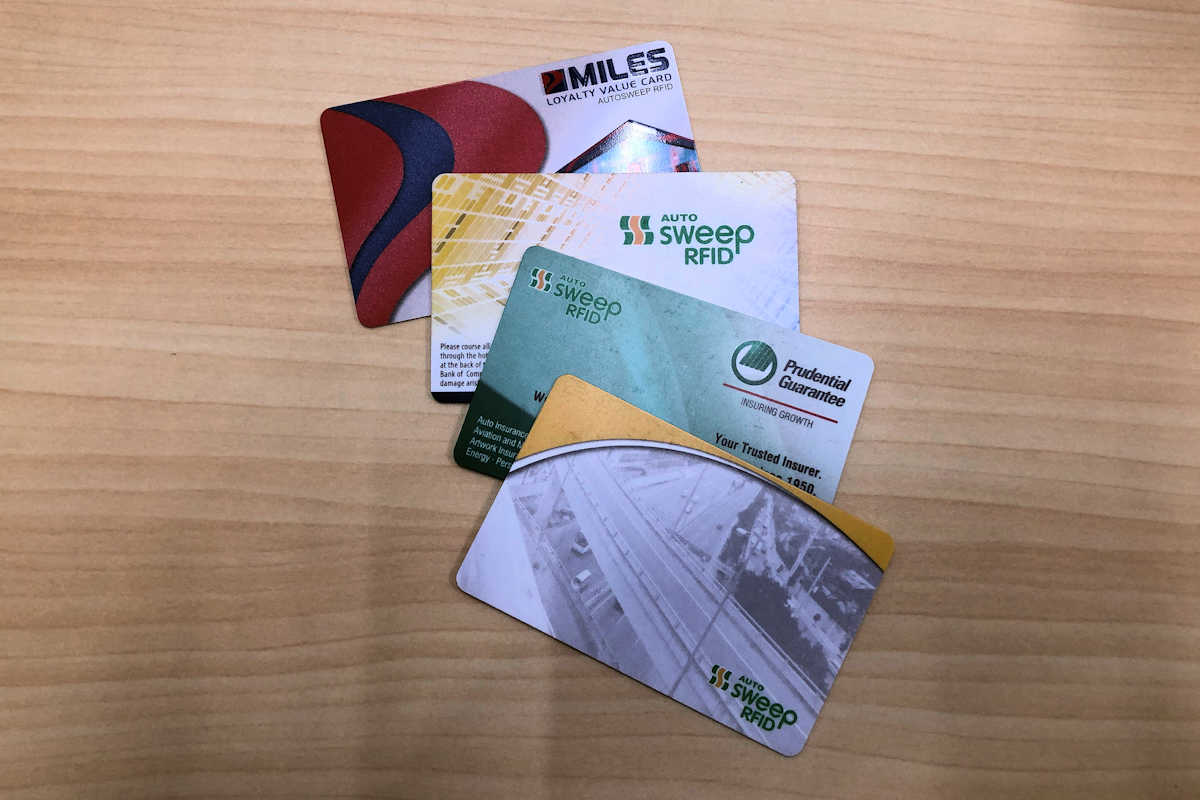Introduction
Welcome to the world of UHF RFID, a technology that is revolutionizing the way we track and manage inventory, assets, and even people. RFID, which stands for Radio Frequency Identification, has been around for several decades, but the use of UHF (Ultra High Frequency) RFID has gained significant popularity in recent years due to its extended read-range and superior performance.
UHF RFID is a wireless technology that uses radio frequency waves to automatically identify and track objects that are equipped with UHF RFID tags. These tags, also known as transponders or labels, contain small microchips and antennas that can store and transmit data. When an RFID reader emits radio waves, the tags within range respond by transmitting their unique identification information back to the reader.
The applications of UHF RFID are vast and varied, spanning across industries such as retail, logistics, healthcare, manufacturing, and more. From inventory management to supply chain optimization, UHF RFID offers numerous benefits that drive efficiency, accuracy, and cost savings.
In this article, we will explore the fascinating world of UHF RFID, diving into its working principles, benefits, applications, common misconceptions, and the exciting potential it holds for the future.
So, buckle up and get ready to discover how UHF RFID is changing the way we interact with the physical world around us.
What is UHF RFID?
UHF RFID, or Ultra High Frequency RFID, is a wireless technology that enables the automatic identification and tracking of objects using radio waves. It operates in the ultra-high frequency band, typically between 860 MHz and 960 MHz. UHF RFID technology has gained popularity due to its superior read-range capabilities, allowing for long-distance communication between RFID readers and tags.
UHF RFID tags consist of a microchip that stores unique identification data and an antenna that enables communication with RFID readers. These tags can be attached or embedded in objects, making it possible to track and manage them effortlessly with RFID systems.
UHF RFID works on the principle of radio frequency communication. When an RFID reader emits radio waves, the UHF RFID tag within its range detects the signal and uses it as a source of energy to power itself. The tag then transmits its stored information back to the reader using backscattering or modulating the radio waves. This information can include vital details such as product information, serial numbers, and location data.
One of the key advantages of UHF RFID technology is its extended read-range. UHF RFID readers can capture tag data from a distance of several meters, enabling fast and efficient inventory management. This makes UHF RFID particularly suitable for applications such as retail, logistics, and warehouse operations where the ability to quickly identify and locate items is crucial.
Another important aspect of UHF RFID is its ability to handle multiple tags simultaneously. With anti-collision algorithms and advanced signal processing techniques, UHF RFID readers can identify and track numerous tags within their range in a matter of seconds. This scalability is essential for industries that deal with large volumes of items, allowing for efficient tracking and management of inventory, assets, and even people.
In the next section, we will delve deeper into how UHF RFID technology works and explore its various benefits in detail.
How does UHF RFID work?
UHF RFID technology relies on the interaction between RFID readers and UHF RFID tags to enable automatic identification and tracking of objects. The process involves several key components and steps:
1. RFID Reader: A RFID reader is a device that emits radio waves and captures data from UHF RFID tags. It acts as a communication gateway between the tags and the backend system. The reader generates a high-frequency electromagnetic field through its antenna, which triggers the tags within its range to respond.
2. UHF RFID Tag: The UHF RFID tag is a device that contains a microchip and an antenna. The microchip stores the unique identification data, and the antenna enables communication with the RFID reader. When the tag receives the radio wave signal from the reader, it uses that energy to power itself and transmit its stored data back to the reader.
3. Communication: The communication between the reader and the tag occurs through the process of backscattering or modulating radio waves. In backscattering, the tag reflects a portion of the incoming radio wave signal with a modified signal that contains its identification data. The reader then captures this modified signal and decodes the information. In modulation, the tag modulates the radio wave signal by altering its frequency, amplitude, or phase. This modulation carries the tag’s data, which the reader interprets and extracts.
4. Data Capture: Once the reader captures the data from the UHF RFID tag, it transmits this information to the backend system or a connected computer. This data can include unique identification numbers, product details, or any other relevant information stored in the tag’s memory. The backend system can then process and utilize this data for various applications such as inventory management, supply chain optimization, or access control.
It’s important to note that UHF RFID technology provides real-time data capture. As the reader scans the tags within its range, it collects the data instantaneously, allowing for quick and accurate tracking of objects. Multiple tags can be read simultaneously, enabling efficient inventory management and asset tracking.
Overall, UHF RFID technology offers a fast and reliable method of automatically identifying and tracking objects. Its ability to transmit data wirelessly and operate over extended ranges makes it a versatile and powerful solution for a wide range of industries and applications.
Benefits of UHF RFID
UHF RFID technology offers numerous benefits that drive improvements in efficiency, accuracy, and productivity across various industries. Let’s explore some of the key advantages of UHF RFID:
1. Increased Efficiency: UHF RFID enables fast and automated data capture, significantly reducing manual efforts and human errors associated with traditional barcode scanning or manual data entry. It allows for high-speed inventory counts, asset tracking, and product identification, leading to streamlined operations and improved overall efficiency.
2. Extended Read-Range: UHF RFID readers can capture tag information from a considerable distance, often ranging from several meters to even tens of meters. This means that multiple tags can be read simultaneously, speeding up the data capture process and enhancing operational productivity.
3. Scalability and Flexibility: UHF RFID systems can handle a large number of tags at once, making them ideal for industries that deal with high volumes of inventory or assets. The scalability and flexibility of UHF RFID technology allow for efficient tracking and management of items in diverse applications, ranging from retail and logistics to healthcare and manufacturing.
4. Real-Time Visibility: With UHF RFID, businesses can gain real-time visibility into their inventory, assets, and supply chain. This up-to-date information helps in making informed decisions, preventing stockouts, optimizing replenishment, and improving overall operational agility.
5. Enhanced Accuracy: UHF RFID technology offers higher accuracy rates compared to traditional methods. It reduces the likelihood of errors caused by manual data entry or scanning mismatches. The automated data capture process minimizes the chances of misreads or incorrect identification, ensuring greater accuracy and reliability in inventory tracking and product authentication.
6. Improved Customer Experience: The increased efficiency and accuracy provided by UHF RFID technology can directly translate into an improved customer experience. With faster and more accurate inventory management, businesses can meet customer demands promptly, reduce out-of-stock situations, and enhance overall service levels.
7. Loss Prevention: UHF RFID can be used to implement efficient loss prevention systems. By tagging high-value items or merchandise, businesses can track their movement within a store or warehouse, reducing the risk of theft and improving security measures.
In summary, UHF RFID technology offers a range of benefits, including increased efficiency, extended read-range, scalability, real-time visibility, enhanced accuracy, improved customer experience, and loss prevention. These advantages make UHF RFID a powerful tool for businesses seeking to optimize operations, streamline processes, and drive growth.
Applications of UHF RFID
UHF RFID technology finds diverse applications across multiple industries, demonstrating its versatility and effectiveness in various scenarios. Let’s explore some of the key applications of UHF RFID:
1. Retail: In the retail sector, UHF RFID is extensively used for inventory management, enabling real-time monitoring of stock levels, automated replenishment, and efficient order fulfillment. It helps retailers improve accuracy in stock counting, reduce out-of-stock situations, and enhance the overall shopping experience for customers.
2. Logistics and Supply Chain: UHF RFID plays a vital role in optimizing logistics and supply chain operations. It enables tracking and tracing of goods as they move through the supply chain, providing real-time visibility into inventory levels, location, and condition. UHF RFID enhances efficiency in warehouse management, transportation, and last-mile delivery, leading to cost savings and improved customer satisfaction.
3. Healthcare: UHF RFID is increasingly being adopted in the healthcare industry for asset management, patient tracking, and medication administration. It helps hospitals and healthcare facilities track medical equipment, monitor patient movement, and improve medication accuracy and safety. UHF RFID technology enables quick and accurate identification of patients, reducing errors and enhancing patient care.
4. Manufacturing: In the manufacturing sector, UHF RFID is used for asset tracking, work-in-progress management, and quality control. It allows manufacturers to monitor the movement of materials, track the progress of production processes, and ensure compliance with quality standards. UHF RFID improves operational efficiency, reduces errors, and enables better inventory control in manufacturing facilities.
5. Automotive Industry: UHF RFID technology is employed in automotive manufacturing and aftermarket services for tracking and authenticating vehicles and components. It enables efficient management of vehicle assembly processes, supply chain logistics, and tracking of spare parts. UHF RFID improves inventory accuracy, reduces counterfeit parts, and streamlines processes in the automotive industry.
6. Asset Tracking: UHF RFID is widely used for asset tracking in various industries, including IT, construction, and hospitality. It allows businesses to monitor the location and status of valuable assets, such as laptops, tools, and equipment. UHF RFID technology provides real-time visibility into asset utilization, reduces theft and loss, and improves overall asset management and maintenance.
7. Access Control: UHF RFID is utilized for access control and security applications in facilities such as offices, stadiums, and educational institutions. It enables contactless authentication, allowing authorized individuals access to restricted areas. UHF RFID offers convenience, speed, and enhanced security compared to traditional access control methods.
These are just a few examples of the wide range of applications where UHF RFID technology is making a significant impact. The versatility and effectiveness of UHF RFID make it a valuable solution in different industries, providing improved efficiency, enhanced visibility, and driving various operational and customer benefits.
Common misconceptions about UHF RFID
Despite its widespread adoption and proven benefits, there are several common misconceptions surrounding UHF RFID technology. Let’s address some of these misconceptions and provide clarifications:
1. UHF RFID is the same as GPS tracking: One common misconception is that UHF RFID and GPS tracking are synonymous. While both technologies involve tracking and identification, they operate on different principles. UHF RFID relies on radio frequency waves and requires proximity between the reader and tags, whereas GPS tracking uses satellite positioning to determine the location of an object over large distances.
2. UHF RFID is too expensive: Some believe that implementing UHF RFID systems is costly, making it impractical for smaller businesses. However, the cost of UHF RFID technology has significantly reduced in recent years, making it more accessible and affordable. Additionally, the benefits and return on investment (ROI) gained from improved efficiency and reduced manual labor often outweigh the initial costs.
3. UHF RFID compromises privacy: There is a misconception that UHF RFID technology invades personal privacy by tracking individuals without their consent. However, UHF RFID requires physical proximity between the reader and tags, and the information stored on the tags is typically related to objects or assets rather than personal identification. Privacy concerns can be addressed through proper implementation of data protection policies and ensuring compliance with regulations.
4. UHF RFID can be easily hacked: There is a belief that UHF RFID systems are vulnerable to hacking or unauthorized access. However, modern UHF RFID systems employ encryption and authentication protocols to prevent unauthorized reading or manipulation of tag data. Security measures, such as secure communication channels and encryption algorithms, ensure the integrity and confidentiality of the information exchanged between readers and tags.
5. UHF RFID accuracy is compromised in certain environments: Another misconception is that UHF RFID performance and accuracy are affected by certain environmental factors, such as metal or liquid interference. While it is true that certain materials can impact radio wave propagation, modern UHF RFID systems employ advanced antenna designs and signal processing techniques to mitigate these challenges. Specialized tags and reader configurations can be used to enhance performance in challenging environments.
6. UHF RFID replaces human workers: It is often misunderstood that implementing UHF RFID systems leads to job losses and replaces human workers. However, UHF RFID technology is designed to complement human tasks, automating repetitive and time-consuming processes. Rather than replacing jobs, UHF RFID enables employees to focus on higher-value activities, such as decision-making and customer service.
By addressing these common misconceptions about UHF RFID, businesses can make informed decisions about adopting this technology and fully leverage its benefits. Understanding the capabilities, limitations, and proper implementation of UHF RFID systems is crucial for successfully integrating them into various industries and applications.
Future of UHF RFID
The future of UHF RFID holds immense potential for further advancements and widespread adoption in various industries. As technology continues to evolve, UHF RFID is poised to offer even greater capabilities and benefits. Here are some key trends and developments that highlight the promising future of UHF RFID:
1. Improved Read-Range and Performance: As research and development in UHF RFID technology progress, we can expect further improvements in read-range and performance. This means that RFID readers will be capable of capturing tag data from even greater distances, enabling faster and more efficient data collection in large-scale environments.
2. Miniaturization of Tags and Increased Tag Lifespan: The miniaturization of UHF RFID tags is an ongoing trend, allowing for their integration into smaller objects and enabling new applications. Additionally, advancements in tag materials and manufacturing processes will lead to increased tag lifespan, making them more durable and cost-effective in the long run.
3. Integration with IoT and Cloud Computing: UHF RFID technology will increasingly be integrated with the Internet of Things (IoT) and cloud computing, creating a seamless ecosystem of connected devices. This integration will enable real-time data exchange, advanced analytics, and enhanced decision-making capabilities, leading to increased operational efficiency and improved supply chain visibility.
4. Expansion into New Industries and Applications: While UHF RFID has already found applications in various sectors, we can expect its penetration into new industries and applications. For example, in the healthcare industry, UHF RFID can play a crucial role in tracking medical supplies, medication adherence, and patient monitoring. In agriculture, UHF RFID can enable precision farming and livestock management. The possibilities are vast, and as awareness and understanding of UHF RFID grow, new use cases will continue to emerge.
5. Integration with Other Technologies: UHF RFID will continue to integrate with complementary technologies, such as sensors, analytics, and artificial intelligence. This integration will provide businesses with valuable insights and actionable data, enabling them to optimize operations, predict trends, and make data-driven decisions.
6. Standardization and Interoperability: Efforts to standardize UHF RFID technology and ensure interoperability between different systems and vendors will become more prominent. This will facilitate seamless integration and collaboration between various stakeholders, promoting wider adoption and easier implementation of UHF RFID solutions.
Overall, the future of UHF RFID looks promising, with advancements in technology, increased adoption, and expanding applications. As businesses continue to recognize the benefits of UHF RFID, we can expect to see further innovation and optimization, ultimately leading to improved operational efficiency, enhanced customer experiences, and increased value across industries.
Conclusion
UHF RFID technology has transformed the way we track and manage inventory, assets, and even people. With its extended read-range, scalability, and real-time data capture capabilities, UHF RFID offers significant benefits across a wide range of industries and applications.
In this article, we explored the fundamentals of UHF RFID, including its working principles and the advantages it brings. We debunked common misconceptions and highlighted the promising future of UHF RFID, including trends such as improved read-range, integration with IoT, and expansion into new industries.
As UHF RFID continues to evolve, businesses can expect further advancements in tag technology, integration with other emerging technologies, and increased standardization. These developments will open up new possibilities for operational efficiency, data-driven decision-making, and enhanced customer experiences.
It is important for businesses to understand the potential of UHF RFID and consider its implementation as part of their digital transformation strategies. Whether it’s optimizing supply chain operations, improving inventory management, or enhancing patient care in the healthcare industry, UHF RFID has proven itself as a valuable tool.
As the technology becomes more accessible and cost-effective, businesses of all sizes can harness the power of UHF RFID to gain a competitive edge, improve efficiency, and drive growth. By staying informed about the latest advancements and best practices in UHF RFID implementation, organizations can unlock its full potential and reap the benefits in their respective industries.
In conclusion, UHF RFID is a game-changing technology that offers significant advantages in terms of efficiency, accuracy, scalability, and real-time visibility. By embracing this technology, businesses can revolutionize their operations, streamline processes, and unlock new opportunities for success in the increasingly interconnected and data-driven world.







